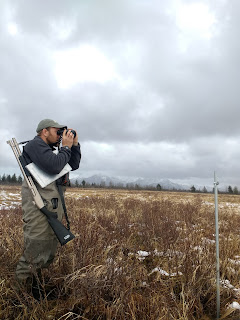
Gone is another month in Cordova, Alaska. We finished our nest island monitoring and spent the large majority of the month performing maintenance on islands that were below project-developed standards. Ideally, the islands possess at least 30% aerial cover provided by the sweet gale shrub. If they lack the desired proportion of sweet gale, we add shrubs until the desired level is achieved. To do this, crew members search for ideal shrubs nearby and transplant these shrubs to the island. In order to make room for those incoming shrubs, crew members often remove chunks of non-crucial landscape from the artificial nest islands. Too much vegetation and land mass on these artificial islands can result in a sinking island (negative freeboard). While landscaping occupies the lion's share of our nest island maintenance time, other issues do arise from time to time. Island anchors sometimes become tangled or loose, usually resulting in a rotating, drifting, or misplaced nest island. These




